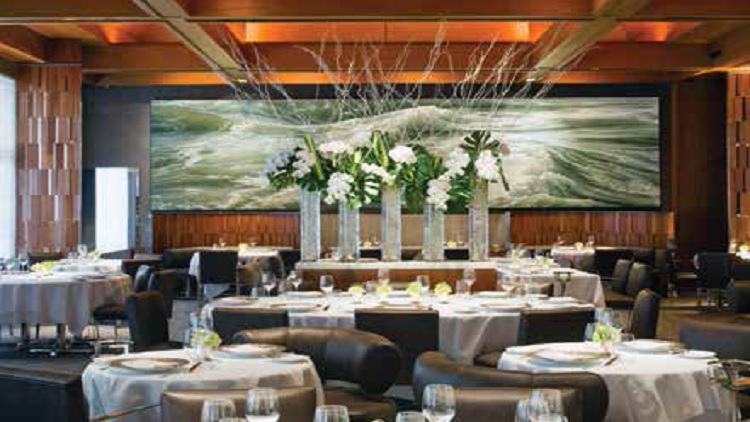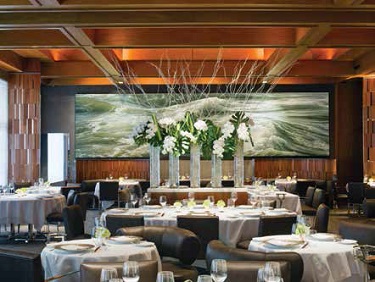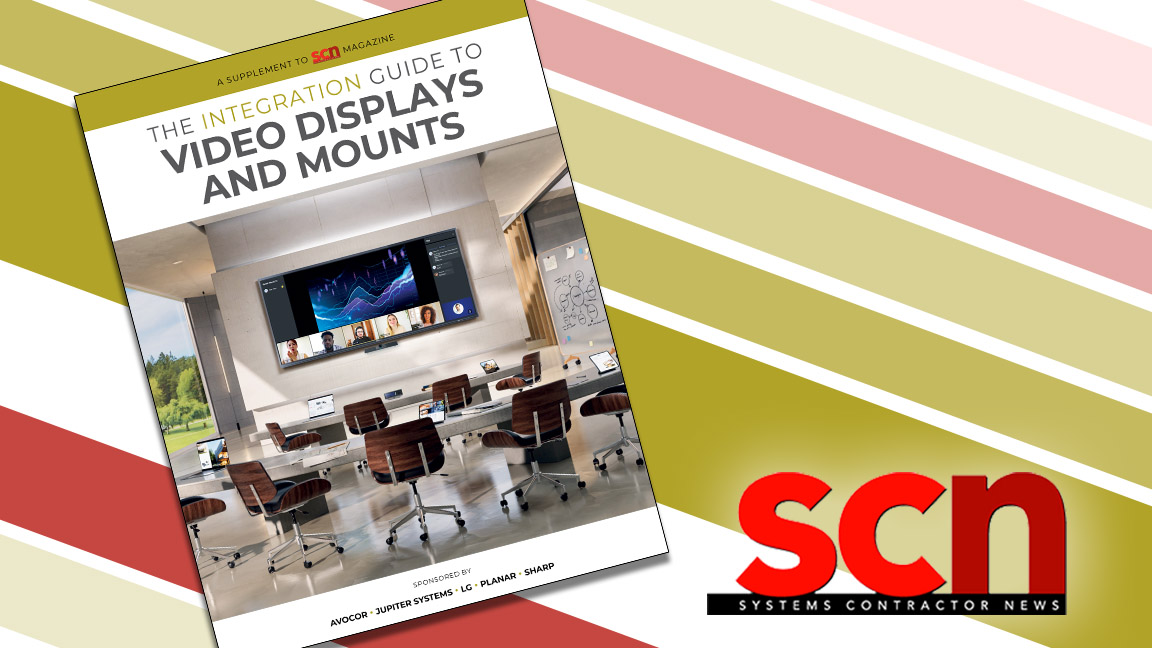Upscale NYC Restaurant Gets A Fitting Audio Upgrade

At Le Bernardin restaurant in Manhattan, taste is the priority, though sight, smell, and touch all play an important part, as well. But where does the fifth sense, sound, fit into the equation? The restaurant, which has held four stars from the New York Times since it opened in 1986 and no fewer than three Michelin stars since 2005, has been run by multi award-winning chef Eric Ripert since 1994. He takes the ingredient of sound as seriously as his seafood.

The four-star restaurant relies on a system featuring d&b’s xS-Series. “In the restaurant industry, being four-star is about details,” he explained. “Sound is a very important part of the restaurant atmosphere, especially at the beginning of the night when the room is not yet full, and then again at the end of the night. So excellence and great sound quality is a must.”
Ripert considers the musical content carefully and has invested in a d&b audiotechnik loudspeaker system to enhance his diners’ experience. “The right music and the quality of sound is essential to the ambience. Today, the four-star experience can and should include music, which was not the case in fine dining 20 years ago.”
That evolution, placing music firmly in the mix, meant seeking out the very best. Ripert engaged EL Media Group, a company with unique skills specializing in providing custom music programs, and experts in the design and installation of pro-audio systems. Company owner Ernie Lake described Ripert’s brief: “Eric is very much in tune with the music and its effect on the dining environment. He came to us and said, ‘I love music, but I can’t get it right in my restaurant.’ So we designed a system based on d&b. Why d&b? That is a reflection of the client’s philosophy of investing in the very best. Personally I would specify d&b systems for every venue we do, but clients all have different priorities. Not that d&b is expensive, but it can be more than what a client wants to spend—that’s a measure of how Eric applies his ethos of only the best ingredients to all aspects of his restaurant.”
Lake based his design on elements of d&b’s xS-Series, a decision predicated on size and performance. “The acoustics were already pretty good in the restaurant. If the background noise level was high, we would always recommend treatment, but Eric had already addressed this. Reflection is not an issue; the room sounds good. And it’s big, maybe one hundred covers. Size was a primary consideration: the d&b 5S is a nice small cabinet, yet it compromises nothing in terms of sound quality. The coaxial dispersion suits the listening environment perfectly. We also positioned a 12S-SUB in there, and we do turn it up, so this is a full-spectrum listening experience.”
A Symetrix Radius DSP with two ARC-2 source controls handles processing. The Radius web app has been a nice feature for the client, Lake said. Two d&b d6 amplifers and a d&b d12 round out the audio processing. The bar and dining areas were zoned separately.
“That need for a quality of sound has to match the quality of the music program and the whole dining experience; it’s a combination of all those influences,” Lake continued. “This is not flimsy background music. The content is carefully chosen and curated, and the diner must be able to comfortably hear the vocal and pick out the nuance of the music effortlessly. We’ve been doing both content curation like this and specifying sound systems since 2005; that gives us the opportunity to guarantee that the audio system is absolutely right for the program the diners listen to. The music content is varied: We have different programs for lunch and dinner; late evening; a different level for different times of day. So the system has to be able to perform equally well at all levels and with different program material— and believe me, it does.”
A daily selection of the top stories for AV integrators, resellers and consultants. Sign up below.
